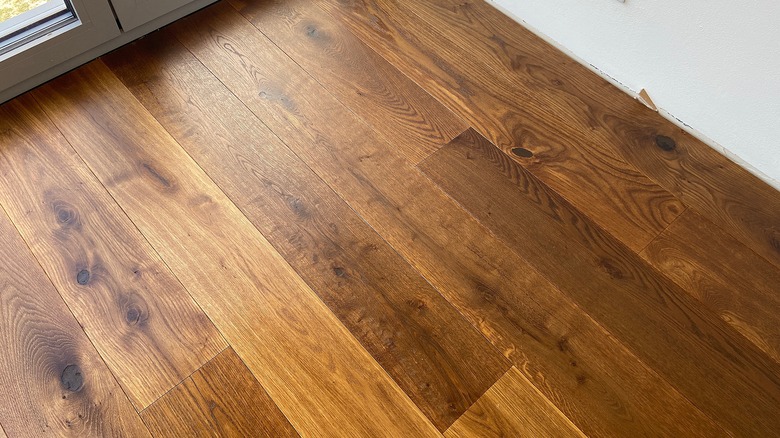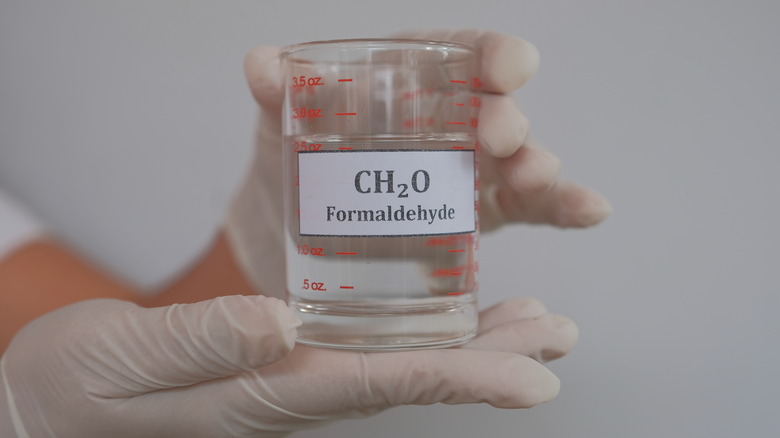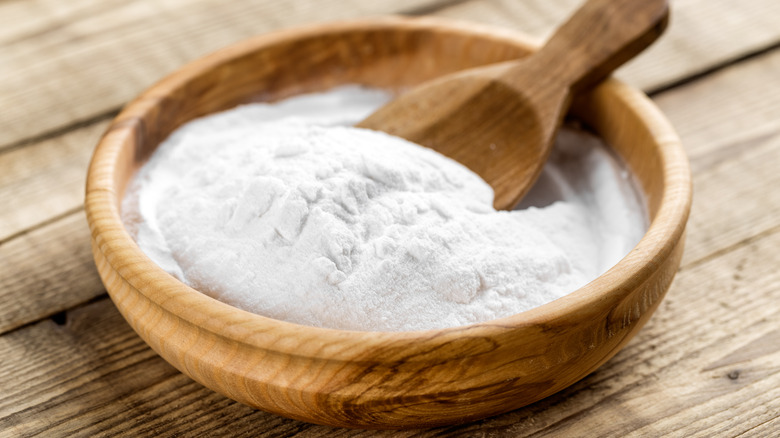Here's Why Your Hardwood Floor Smells Like Pickles (& How Baking Soda Can Help)
As newer homes become more airtight in response to stricter energy codes and enhanced building methods, they trap more odors in their walls. Some of these are commonplace — like the aromas released during cooking, the smell of fried seafood, or the scent of cleaners you use at home. Others, like the musky smell of mold, are telltale signs of a growing problem in the house. Yet some odors are seemingly out of place in a home, and coming across these can leave you scratching your head in wonder. For example, if you've recently installed hardwood flooring — especially engineered wood — you may find that a strong smell of pickles permeates the space. This inexplicable odor has a rather sinister source — formaldehyde off-gassing from the floorboards' adhesives or lacquer.
Formaldehyde is a Volatile Organic Compound (VOC) found in many household items, especially new ones. This compound is an ingredient in adhesives, which are used to manufacture materials like engineered hardwood flooring. At room temperature, formaldehyde turns into a clear gas and seeps out of the object it's in. Exposure to formaldehyde can irritate the skin, as well as the mucous membranes of the eyes, throat, and nose. Luckily, there are a few things you can do using simple ingredients like baking soda, or simply ventilating the home, to reduce formaldehyde levels in the air.
Other household items formaldehyde may be found in
Since formaldehyde is a common adhesive ingredient, it can be found in plenty of different household items and the construction materials used to build a home. For example, any composite wood products, such as plywood, particleboard, or fiberboard usually contain formaldehyde because of the adhesive resins in their composition. These wood products are often used to manufacture interior doors, cabinetry, flooring, and furniture, so expect formaldehyde to be off-gassing from these items in your home. If you stain or paint the interior, chances are that these coatings are emitting formaldehyde gas as well. You can keep your home air clean by avoiding paint with VOC ingredients.
Apart from furniture, cabinetry, and interior finishes, formaldehyde is also often present in permanent-press fabrics — fabrics treated with chemicals and resin to make them wrinkle-free. These are the fabrics used to make upholstery, linens, and drapes or curtains, and even wrinkle-free clothing. Finally, the home itself may be a source of this VOC. That's because formaldehyde is an ingredient in fiberglass (batt) and foam insulation that's used to block heat transfer between the outdoors and the home's interior. In most cases, it takes a newly manufactured, formaldehyde-containing object two years to off-gas completely. If you have a newer home, this time frame may be longer. That's because newer homes are generally more airtight than their older counterparts, and their walls allow less air movement. But while this airtightness helps reduce home energy costs, it also prevents VOCs from venting quickly.
Baking soda and other ways to get formaldehyde smell out of floors and other household objects
Using baking soda may help you get rid of the off-gassing formaldehyde scent faster. Baking soda is a potent deodorizer that removes odors by neutralizing them — this applies to smells released by basic and acidic compounds. Formaldehyde is acidic in nature, and it seems that baking soda is capable of neutralizing its smell and removing it from the air. A study performed by the Nanyang Technological University (NTU) in Singapore found that powdered baking soda reduced VOC levels in the air by about half. To help expedite the off-gassing, you can place bowls filled with baking soda around the room where the hardwood flooring is releasing formaldehyde. According to the same study from NTU, activated carbon was also effective at removing formaldehyde from air. Used coffee grounds, lemon juice, white vinegar, and citrus peels can also help you deodorize the affected space and get rid of the formaldehyde smell.
However, according to the Center for Disease Control (CDC), frequent home ventilation is a must for removing formaldehyde and other VOCs from the air. In particular, the CDC recommends opening the home's windows for several minutes at least once every few days. Also, the agency advises homeowners to keep the home's indoor climate as cool and dry as possible — this keeps the formaldehyde from releasing in large volumes. In contrast, "baking" the home does not work, — doing so can actually increase the formaldehyde content in the air.



